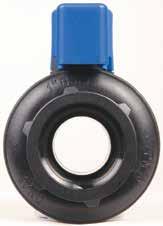






AN HISTORIC application has been made by AgResearch to conduct trials that could lead to a ryegrass species that offers better protection from pests.
It could also see a poten tial reduction in the inci dence of animal health problems such as rye grass staggers.
Scientists at AgResearch want to run outdoor field trials on gene edited endo phytes in ryegrass to see if the results of lab oratory tests are valid in an outdoor environ ment. To do this they need approval from the Environmental Protec tion Agency (EPA).
The trials to date have been conducted at AgResearch’s Grasslands facil ity at Palmerston North. But this new proposal is taking this a step further to see if the endophytes per form as well in the outdoor environ ment as they do in the glasshouses where the present trials are being conducted. It should be noted that outdoor trials of a similar nature on gene edited endophytes in ryegrass are already being conducted in Australia.
AgResearch science team leader Dr Richard Scott says the endophytes are symbiotic fungi that live within the ryegrass plant and some of the prod
ucts they produce provide protection against pests. He says the endophyte is only found in the plant tissue and plant seeds and can’t be transferred by an insect or pollen – only by seed.
Scott says if the trial is approved, the plants will not be allowed to seed so that no material can be spread by the wind or birds beyond the designated containment area.
the AgResearch proposal is very significant historically. The last application of this nature to be approved was back in 2010 when Scion, also known as the Forest Research Institute, was granted
information until they are satisfied that they have enough data to make a decision. Initially this is an iterative process,” he says.
Once the EPA has gone through the draft, then he says a formal proposal will be lodged which will be put out for public consultation before a final Scott says, from their lab work, they are confident that they know how the endophytes are behaving in the plants. But he says only when field trials are done and the laboratory gene edited endophytes are tested in the ‘normal outdoor’ environment will there be conclusive proof. He says initially the trials will take place in one location, but over time others could also









NEWS 1-9
MARKETS 10-11
HOUND, EDNA 12
CONTACTS 12
OPINION 12-13
AGRIBUSINESS 14
MANAGEMENT 15
ANIMAL HEALTH 16
MACHINERY AND PRODUCTS 17-18
RURAL TRADER 19
HEAD OFFICE
Lower Ground Floor, 29 Northcroft Street, Takapuna, Auckland 0622
Phone: 09-307 0399
Fax: 09-307 0122
POSTAL ADDRESS
PO Box 331100, Takapuna, Auckland 0740
Published by: Rural News Group
Printed by: Inkwise NZ Ltd
CONTACTS
Editorial: editor@ruralnews.co.nz
Advertising material: davef@ruralnews.co.nz
Rural News online: www.ruralnews.co.nz
Subscriptions: subsrndn@ruralnews.co.nz
NEW ZEALAND’S dairy sector is more threatened than our meat producers by the development of new proteins, according to new research funded by the Our Land and Water National Science Challenge.
However, the country’s dairy companies say the report over-simplifies dairy’s value as a food and the ease with which it may be substituted.
The Protein Future Scenarios project modelled the future economic and environmental implications of three main alternative protein technologies.
The project was a collaboration of the AgriBusiness Group with the Lincoln, Canterbury and Otago universities and the Norwegian research group Ruralis.
Research leader Jon Manhire of AgriBusiness told Rural News the project found the most disruption would be associated with precision fermentation, which uses fermentation and

yeasts to replicate dairy products.
“Basically, you take a cell from a cow and you put it into a yeast and then you put it into a biofermenter and you just have to add sugar and water. Then you can harvest out those proteins that could be used as ingredients
DAIRY COMPANIES Association of New Zealand (DCANZ) executive director Kimberly Crewther (pictured right) said that while the report concerned itself with alternative proteins, the value of dairy as part of a sustainable food system extended beyond protein.
“Milk is a nutritional powerhouse, making a disproportionately high contribution to a range of nutrients.
“The 7% of global calories supplied by milk not only contributes 12% of global protein, but also accounts for supply of 49% of food calcium, 24% of vitamin B2, 18% of lysine, and more than 10% of a further five essential amino acids, vitamins A, B5 and B12, phosphorous and potassium.
“Overall milk is a top five source of supply for 23 out of 29 essential nutri-
ents within the global food system.”
Crewther said characterisation of New Zealand dairy products as protein ingredients that are easily substituted was overly simplified.
“Technologies for plant based alternative proteins are not able to replicate the nutritional matrix of milk, and it is this full nutritional package that is the basis for dairy’s inclusion in dietary guidelines.
for ice cream or whatever you want.
“It’s a technology which is up and going and it’s scalable,” said Manhire.
The other technologies were using plant protein to produce meat substitutes, and cellular cultivation, which involves taking a living cell and having it replicate itself over and over in a nutrient medium.
Noting that Sunfed, a New Zealand-based meat substitute manufacturer, recently announced that it is closing, Manhire suggested plant-based proteins may have “reached a bit of a peak,” while cellular cultivation was still at a low level of development.
The project modelled four scenarios, based on different rates of uptake and associated changes in consumer demand, and looked at their effects on land use, the environment and economy out to 2050.
Manhire said an expected general increase in global demand for protein would limit the impact on New Zealand’s traditional protein production

“The high degree of nutritional completeness of milk underpins the ongoing global demand growth for dairy, which is forecast to remain strong, with countries including China and Indonesia having adopted targets to
increase milk and dairy product consumption as part of healthy diets for their populations.”
Crewther noted that one of the four scenarios suggested emerging proteins would contribute towards increased demand without significantly affecting traditional proteins.
“DCANZ believes this is the most likely scenario and that dairy products will continue to play an important role in sustainable food systems and make a significant contribution to the New Zealand economy.”
DCANZ also agreed with the caution expressed in the report around highly positive growth of alternative proteins.
“This is on the basis that the commercial viability of these products is not
out to about 2035. But beyond that “there could be some pretty significant impacts” on some pastoral sectors.
The scenario predicting the worst economic outcome for New Zealand envisages that precision fermentation “takes off” but the other two technologies don’t. Decreased output from the dairy sector would drop New Zealand’s economy and employment by around 9%, albeit with some positive environmental outcomes in lessened nitrate and greenhouse gas emissions.
Manhire emphasised that that was their bleakest scenario and other scenarios had more positives.
Under the best scenario, all three alternative proteins “take off” with all current barriers to their success overcome. That would bring a shift in land use from pastoral farming to arable and forestry, with widespread overall improvements in employment and the economy (up 7%), and lessened environmental impacts of farming.
yet established, nor is their potential to exceed the contribution that dairy makes to sustainable diets.”
Crewther said a published joint study by Fonterra and VTT (the Technical Research Centre of Finland) showed that, contrary to claims by some start-ups, the carbon and water footprints of protein from precision fermentation were not considerably lower than protein extracted from milk, and in fact could be higher. Suggestions of a GHG reduction if New Zealand dairy is replaced by plant-based protein were also overly simplified when the full nutritional contribution of milk across all nutrients for a healthy diet was considered.
Crewther agreed that there was a “significant breadth” of potential future scenarios.


NO SURPRISES, the Hawke’s Bay horticulture sector needs a huge injection of additional cash –at least $410 million – if it’s to recover from where it was before Cyclone Gabrielle struck in 2023.
A report by the Boston Consulting Group (BCG) which was done pro bono says the shortterm, critical response to the cyclone was a success, thanks to a timely joint response between the public and private sectors. But it goes on to say that at least $345 million more is needed for replanting and reinstatement, and $65 million more for on-orchard clean up. BCG New Zealand managing director and partner Phillip Benedetti
says Hawke’s Bay growers are still facing extremely tough economic conditions a year on from Cyclone Gabrielle.
He says growers are facing tightening margins with increasing production costs and challenges that were exacerbated by Gabrielle’s impact on harvests and infrastructure.
“The horticulture sector is struggling to attract and retain talent, with young people leaving the sector and the region. Limited funding for horticulture education further adds to this challenge, and with the cyclone worsening business prospects in Hawke’s Bay horticulture, the sector could lose even more talent,” he says.
Benedetti says to strengthen the horticulture sector and achieve long-term resilience,

there needs to be targeted support for those most in need, investment in replanting and orchard-based technologies, and the long-term risks posed by climate change need to be
addressed.
“Continued collaboration between the government and the private sector is essential to ensure the long-term sustainability and growth of the Hawke’s Bay horticul-
tural sector,” he says. The report confirms what growers have told Rural News in the past –pointing out that it may take a generation or more for some orchards to fully recover. Some have sug-
gested that they may have to completely financially restructure their businesses because of the cost of re-establishing their orchards. The problem being, as one orchardist said, that it takes seven years from planting new trees to getting a commercial crop –leaving a financial hole in that period.
Apples and Pears New Zealand chief executive Karen Morrish says BCG’s report confirmed what the industry body is hearing anecdotally that apple and pear growers in Hawke’s Bay continue to struggle in the wake of Gabrielle.
She says the cyclone hit at a time when the industry was already facing pressure on profitability due to inflation, and replanting orchard blocks requires signifi-
cant time and money.
“Replanting also requires water and right now, many of our growers are facing significantly reduced water allocations from the Hawke’s Bay Regional Council. Also, we have other growers who have the funds to invest and develop new blocks but can’t find land with the appropriate water consents,” she says.
Morrish says growers are critical to the Hawke’s Bay community and are deeply enmeshed, with their lives and families here.
She says they don’t want to take unnecessarily from the environment, however for them to reestablish what was lost, they must be provided the right environment to work within and currently, this is not the case.
A FINAL report supporting improvements in New Zealand’s genetic gain system for the national dairy herd is being backed by the sector’s leading genetic companies.
The Independent Working Group’s (IWG) final report looked at the dairy sector’s genetic improvement progress and has put forward recommendations to drive faster rates of genetic gain in New Zealand’s dairy herd.
Industry good body DairyNZ, LIC and CRV say they are committed to making changes for the sector’s benefit and will each consider the IWG’s recommendations.
LIC chair Corrigan Sowman and CRV managing director James Smallwood say that they’re pleased with
the focus on transparency and consistency.
“Genetic gain is a critical pillar in the future success of our farmers’ businesses. It is only right that, where needed, we come together to improve the structures underpinning this success,” Sowman says.
“We’re looking forward to working closely with DairyNZ to set up the right governance structures, workstreams and reporting mechanisms so we can effectively achieve the report’s stated objectives for the betterment of dairy farmers and the efficiency and profitability of their dairy herds to support New Zealand’s future.”
Smallwood says LIC and CRV appreciate the IWG’s recognition of

their focus on genetic improvement for the betterment of the national herd, and the important contribu-
tion of their combined work to date.
“It’s pleasing to see the IWG encouraging the consideration of existing international models to help us find workable solutions. We both thank the IWG for the work it has undertaken,” he says.
DairyNZ chair Jim van der Poel says the report is ground-breaking because it captures in one place the reasons New Zealand has fallen behind international competitors, while clearly outlining a way forward that can involve all sector players.
“It also shows New Zealand can catch up quickly by taking key actions and underscores the immense benefits to dairy farmers – including efficiency and productivity gains through
animals that are more resilient, profitable and easier to farm,” he says.
“Overcoming sector challenges to provide New Zealand farmers with world-leading genetic gain will require significant contributions from all parties.”
Recommendations include strengthening the role and impact of the National Breeding Objective (NBO) for achieving genetic gain in the New Zealand dairy herd. This is expected to improve the amount and quality of phenotypic data collected from commercial dairy herds and encourage all sector players to use genomic technologies to make genetic gain (aligned to the NBO) as fast as possible.

ADMIT THAT you stuffed up and apologise to the people of Wairoa. That’s the message from Federated Farmers president for Wairoa and Gisborne, Charlie Reynolds, to the Hawke’s Bay Regional Council (HBRC) for not opening the bar at the river mouth which led to many residents in the township being flooded out.
Reynolds says while the recent flood affected mainly the township of Wairoa, there were problems for farmers. He says the local Affco freezing works ran low on water supplies for a time, which meant they could not operate at full capacity.

He says he’s heard from farmers who had their processing dates rescheduled. “Answers need to be had quickly from HBRC and I don’t mean sitting down and having a review and getting
another group of people to sit down and eat sausage rolls. There needs to be an admission from the chair of HBRC that they stuffed up and caused the flooding,” he says Reynolds believes

THE ANNUAL Red Meat Sector Conference, to be held in Wellington later this month, is expected to attract 300 stakeholders. The conference is hosted by the Meat Industry Association (MIA), with Beef+Lamb New Zealand (B+LNZ) as partnership sponsor. This year’s conference theme is ‘From Our Pasture To Your Plate’. Leaders from processing and exporting companies, policymakers and representatives from associated industries will attend the two-day event.
MIA chair Nathan Guy said the conference will cover emerging topics from across the global red meat supply chain.
“Across the two days, we will hear from a host of expert speakers and explore opportunities for innovation, trade, sustainability and value growth.
“The conference is always an excellent opportunity for the sector to engage on key issues and showcase innovation and best practice.
“It comes at a crucial time for the red meat sector with sheep and beef farmers and exporters facing weaker pricing for products in our global markets.”
MIA chief executive Sirma Karape-
eva said the programme of high-quality speakers include Ray Smith, Ministry for Primary Industries Director-General, Patrick Hutchinson, chief executive of the Australian Meat Industry Council, Hamish Marr, New Zealand’s Special Agricultural Trade Envoy, Su McCluskey, the first Special Representative for Australian Agriculture, and international trade expert Stephen Jacobi.
“A series of interesting breakout sessions will cover a range of topics from emerging technology and climate change to nutrition and public health and biosecurity,” says Karapeeva.
The conference’s Maersk Gala Dinner will feature leading chef Dale Bowie, founder of the Development Kitchen, which operates a custom-built and fully equipped test kitchen facility in Wellington with cutting edge scientific equipment to support research and development.
He will be sharing how his team is blending science and the art of cooking to ensure New Zealand grass-fed red meat establishes itself as a unique dining experience using a distinct flavour and texture profile.
part of the problem for Wairoa is that the HBRC is not based in the town and that it tends to focus on issues in the greater Napier and Hastings area. He says, for Wairoa farmers, the recent rains affect
morale. He says one day they repair a fence and two days later it’s washed away.
From what he’s heard, some Wairoa farmers have suffered washouts and he also points to the
fact that the Tiniroto road – the inland route that links Wairoa to Gisborne – has been out for much of the past year and the alternative route he describes as “not very nice”.
While Wairoa farmers appear to have dodged a bullet with the recent rains, those around Gisborne, especially those on and around SH2 between Gisborne and Opotiki, have been badly affected.
Reynolds, who lives in that area, says the recent storm was worse for many farmers there than it was when Cyclone Gabrielle struck. He says access to some farms has been cut and infrastructure on these farms damaged.
He says he’s got a per-
sonal beef with the Gisborne District Council over the clearance of logs from the Waimata River. He claims the logs were dragged out of the river and stacked on the banks. “But when the recent rains came, the logs got washed back into the river again and have ended up on local beaches,” he says.
Overall, Reynolds says he’s very pleased with the way the Government has responded to the plight in Wairoa. He says they acted quickly and provided much needed financial assistance and have tried to get answers from HBRC as to why the mouth of the Wairoa River was not cut in time to avoid the disaster that eventuated.



JESSICA MARSHALL jessica@ruralnews.co.nz
THE SECRETARIAT of the Government’s new methane science review panel says support from the agricultural industry is central to developing enduring solutions to agricultural emissions. The review was announced last month by Climate Change Minister
Simon Watts and Agriculture Minister Todd McClay and has been set up to provide evidencebased advice on what the biogenic methane target
“The Government is committed to meeting our climate change obligations without shutting down Kiwi farms.”
few weeks to get to know each other and sort out its “plan of attack”. Meanwhile, the sec-

There will also be a process for interested parties to submit relevant advice to inform the panel.
New Zealand’s current legislated methane targets would require an incredibly ambitious 10% reduction in methane by 2030 and a 24 to 47% reduction by 2050.
Farmer groups including Federated Farmers have opposed these targets from day one.
The five-member advisory panel includes Professor David Frame, University of Canterbury,
scientists with extensive domestic and international experience on climate change and biogenic methane.
McClay says the panel’s report will complement the Climate Change Commission’s review of the 2050 targets this year and will inform the Government’s response to the Commission’s advice in 2025.
“The Government is committed to meeting our climate change obligations without shutting down Kiwi farms. We need to make sure our
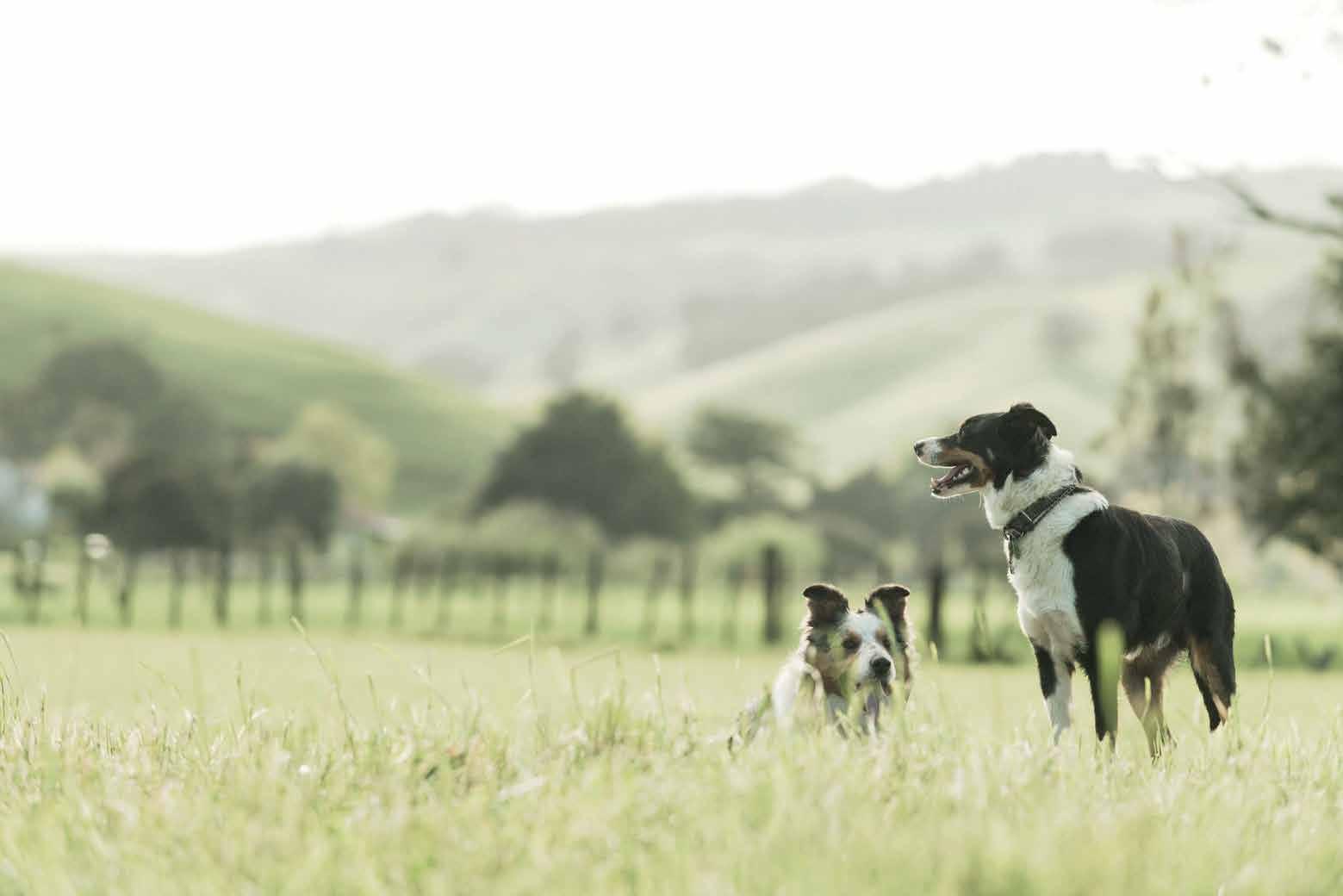




PLANS ARE afoot for an energy farm, which will demonstrate how productive land can be optimised to grow high-value horticulture crops while generating commercialscale solar energy.
The Lincoln University Energy Farm, which is currently under review for resource consent, will be constructed on a 4ha parcel of universityowned land adjacent to the campus.
The university says that a distinctive feature of the Energy Farm will be its ability to host a comprehensive range of experiments and crop trials to help develop “leading-edge practices that can be replicated and
rolled out across New Zealand and the world”.
The increase in biodiversity will also be a subject of research, with extensive native planting around and within the site for crop wind protection, onsite water management and improved aesthetics.
The 1.5 MWp solar installation will comprise around 2,800 photovoltaic (PV) panels, generating ~2.3 GWh of renewable energy per year. The rows of bifacial PV panels will be mounted on a state-ofthe-art east-west tracking system, with two different height configurations, allowing for commercial crop production along-
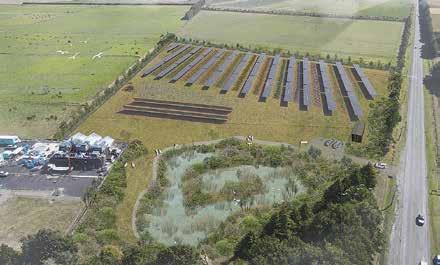
side and underneath the panel structures.
The specific high-value crops to be co-located with the solar array are yet to be determined but are likely to be blueberries, ranui berries or
snowberries.
Next to the main array, a second smaller array will be dedicated to multi-use research as its main function, with complete manual control, different height and panel
Choose MARATHON® LA Injection as your pre-lamb treatment to ensure your ewes are in optimal health during the lambing period.
Not only will you have the convenience of the prolonged protection of MARATHON® LA Injection, but if you -
PURCHASE 40 packs of 500mL*, you will receive a Lanati Astron convenient cordfree handpiece kit (RRP $895).
This world leading, new slimline, high torque handpiece, is the ideal tool for dagging, crutching, and shearing small flocks.
See your local veterinary practice for details.
configurations, and different panel technologies.
The new Energy Farm will be the first demonstration of high-value agrivoltaics in New Zealand. While livestock grazing is com-
monly practised within solar installations locally and internationally, this approach is primarily for the purpose of managing grass growth and is relatively low value.
Lincoln says it was also the first New Zealand university to generate solar energy on a commercial scale, with several campus buildings supporting large roofand wall-mounted solar arrays.
Scheduled for completion mid-2025, the energy farm is expected to increase the university’s total generating capacity to approximately ~3.56 GWh, covering 18% of the campus’s annual electricity requirements after the
heating system upgrade to 100% electric power. Most of the energy generated by the new array will be used by the Lincoln campus, though the university will be looking to donate excess energy to the nearby community during lowdemand periods like the end-of-year break and summer weekends.
Lincoln University’s chief operating officer, Susie Roulston, said the proposed energy farm is key to the university’s goal to become carbon neutral by 2030 and carbon zero by 2050.
“Our multi-disciplinary approach has enabled decarbonisation and a novel agrivoltaic system.”



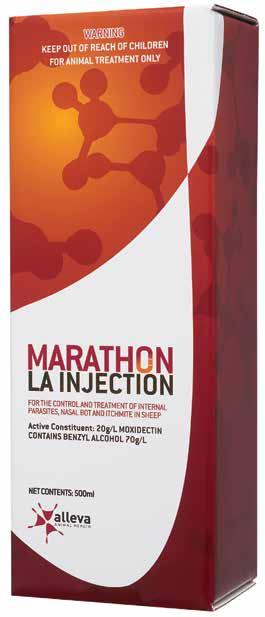
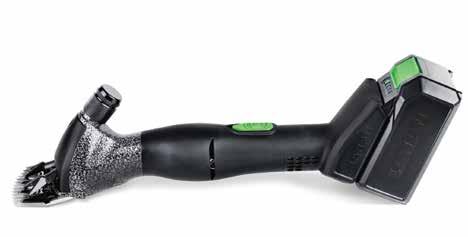
A POTENTIAL crisis is looming for Chatham Island farmers who are still unable to get their stock off the Islands.
It’s estimated that 28,000 sheep and 7000 cattle need to get to the mainland urgently but can’t because the ship that normally takes them there is still being repaired.
The Ministry for Primary Industries (MPI) is working with the shipping company and local farmers to try and resolve the situation quickly, to avoid farmers losing money for their stock and to have feed available for new lambs
“Normally stock would be shifted off the islands as soon as they become prime and ready for sale, but this hasn’t happened.”
and calves due shortly.
MPI’s on-farm support team director, Dr John Roche, along with three of his key staff, visited the Chatham’s recently.

It was his first trip to the Islands and says he was overwhelmed by the kindness and hospitality of the locals.
The trip was an initiative by MPI to find out at




first hand just what the situation was.
Roche told Rural News the farmers there are under huge pressure and life is very challenging for them.
“Normally stock would be shifted off the islands as soon as they become prime and ready for sale, but this hasn’t happened. Everyone is aware of the
problem and are working to get a solution as quickly as possible,” he says.
Roche says the farmers are in the impossible position of not getting any revenue for their stock while at the same time having to deal with the downturn in prices that all farmers are having to cope with at the
moment. He says everything costs more on the Chathams, including fuel and food, because it must be brought there by ship or aircraft and he says he cannot emphasise enough the problems the people face.
“So, there hasn’t been any revenue for some time and that limits their financial situation,” he says.
Roche says last year’s lambs are a high priority to get off the islands because, if they don’t, they are at risk of becoming hoggets and possibly worth less.
He says MPI is working with the local farmers and the shipping company to try and devise a system that speeds up the loading of the ship and hence get a faster turnaround, and maybe more sailings.
Even if the ship was available immediately, it’s estimated that it would require multiple trips to get all the animals off to the mainland.
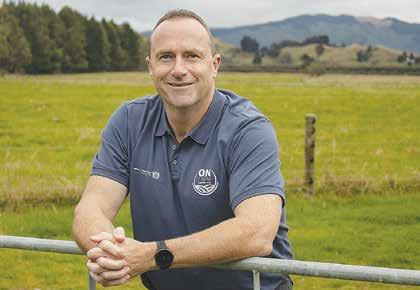
ACCORDING TO John Roche, the saviour for Chatham Island farmers this season has been the weather. He says grass growth has been good and the stock are in excellent condition. But another problem looms in the background – feral cattle.
Roche says in many parts of the rugged islands roam wild or feral cattle – animals that have likely escaped in the past, but which are now breaking down fences and eating feed that should be consumed by farmed animals.
To that end, MPI is working with farmers who have a problem with feral
cattle to get rid of them; just recently a helicopter was used to track down and shoot these ‘predators’.
Roche says the helicopter is the only way to deal with the problem given the rugged nature of the countryside. He says a programme to get rid of the feral animals will likely take another couple of months.
As time ticks by for a solution to getting lots of animals off to the mainland, there is the worry in the background of an animal welfare issue. Roche says this is not the case yet, but says he’s working with his compliance team and the farmers themselves to avoid a problem.
PETER BURKE peterb@ruralnews.co.nz
THE GOLDEN era of international trade is over, and a new order has emerged.
That was the gist of a speech by New Zealand’s top trade negotiator, Vangelis Vitalis, at the recent Primary Industry Summit in Wellington.
He told the gathering that many of the major countries are no longer abiding by rulesbased trade that was a cornerstone of World Trade Organisation (WTO).
He said they are now making their own rules and that, combined with growing protectionism, is making it challenging for NZ.
He pointed out that in the heyday of the WTO, NZ was very successful in taking some of the larger jurisdictions to a disputes panel at that organisation for breaching elements of the rules-based trade agreements with NZ.
As it turned out, NZ won these disputes, but the chances of doing this now have all but disappeared as many of the major economies have ignored the rules of the WTO and the power of that organisation is limited.
Vitalis told the conference that this breakaway from rulesbased trade is challenging
for our country, and we now have to find a new way of dealing with it. He questioned whether telling the big powers who have stepped outside the rules to change would work, given that they have been doing it for a long time, but he added that doing nothing was not an option.
He says the best option is for NZ to work with small countries that still embrace agencies that we are already involved with, such as the CPTTP, the Digital Economy Partnership Agreement DEPA, and the recent Agreement on Climate Change Trade and Sustainability ACCTS.
The supposition is that within these forums, NZ may have its voice heard and in doing so could affect some change for the better.
While there is push back on rules-based trading, the geopolitical situation at present is uncertain-bordering-onchaotic, with wars in the Middle East and Ukraine and political swings to the right and left in many major counties, all of which impinge on how and where NZ trades.
Despite the push back on rules-based trade, NZ has managed in the last couple of years to successfully negotiate FTA’s with the UK, and the EU
A COUPLE of points that appear to arise from Vangelis Vitalis’s address to the primary sector is that negotiating a trade deal today is much harder and complex that it was say 20 years ago.
Taking the UK and EU FTA’s as examples, these are clearly more complex and detailed than say the China FTA which was negotiated back in 2008. The UK and EU FTA’s and those in the future obviously need skilled and experienced trade negotiators and there is no place for gifted amateurs around the negotiating table. A mix of high skill, entrepreneurship and agility will be the order of the day.
In terms of world trade, the jungle has grown back and clear pathways to deal making are no longer there. What the NZ public is likely to see more of is something that was touched on recently the EU Ambassador to NZ, Lawrence Merideth, when he said more had to be done to inform NZ businesses in much greater detail about the opportunities that exist in the EU/NZ FTA and, for that matter, other agreements.
and progress towards FTA’s with the UAE and the Gulf Cooperation Council countries. At the same time the present government focus is very
much on South East Asia, with moves to put deals together with the likes of the Philippines and Vietnam. India remains a key focus and a challenge.






Dairy
THE OCEANIA spot
butter price hit a record high in June 2024 surging past US$7,000/tonne for the first time. However, the latest Global Dairy Trade saw a 10% drop and prices are now around US$6,546/MT.
Behind these soaring butter prices is a combination of supply and demand fundamentals for dairy fat and cream. Sluggish milk supply growth in the Northern hemisphere during the seasonal flush is limiting surplus milk available for manufacturing.
New Zealand is now into its milk production hiatus, helping to curb supply in the short term.

Inventories in international supply chains are not excessive, leaving spot purchasing vulnerable. Furthermore, there is a seasonal increase in demand for fat products, like ice cream, in the northern hemisphere at this time of the year.
Butter pricing is out-
performing the broader dairy complex. In June 2024, spot prices (in USD terms) for the other main dairy commodities were flat to slightly higher. Skim milk powder is particularly languishing behind other dairy commodities, lingering over 10% behind five-year
average prices. For farmers, this is good news. Butter prices are one of the reference commodity products which make up Fonterra’s farmgate milk price calculation.
BOTH PROCUREMENT pressure and a strengthening pull in certain export markets are driving positive beef farmgate prices this winter. Average export values reached $9.44/kg in May 2024, the highest seen since the 2022 calendar year.
Looking at conditions on farm, rain has fallen widely across New Zealand in the past two weeks, with some eastern North Island areas
receiving more rain than desired. Other parts of the country saw good, steady rain to help dry conditions. Where conditions aren’t too wet under foot and there is some good cattle feed around, farmers have the option for winter liveweight gains. Wet areas around New Zealand may
14,400 tonnes in May and 45% in value to $97.8m. The US has now moved ahead as the largest market for New Zealand beef by both volume and value for this season to date.
Beef exports to Japan surged ahead compared to May 2023 with volume up 164% to 5500 tonnes.
to China, RaboResearch forecasts New Zealand farmgate beef pricing to remain strong in coming months.
ing and exporting in large
33% YOY in volume to

and the lower exposure
THERE’S SOME good news for export values –and there may be more good news in months to come. Average export values for lamb were $10.42/kg FOB for the month of May, the highest year-to-date values and the highest seen since September/October 2023. Perhaps some more positivity is on the horizon with lamb and mutton prices following a pleasing trend upwards as winter settles in – albeit still below the five-year


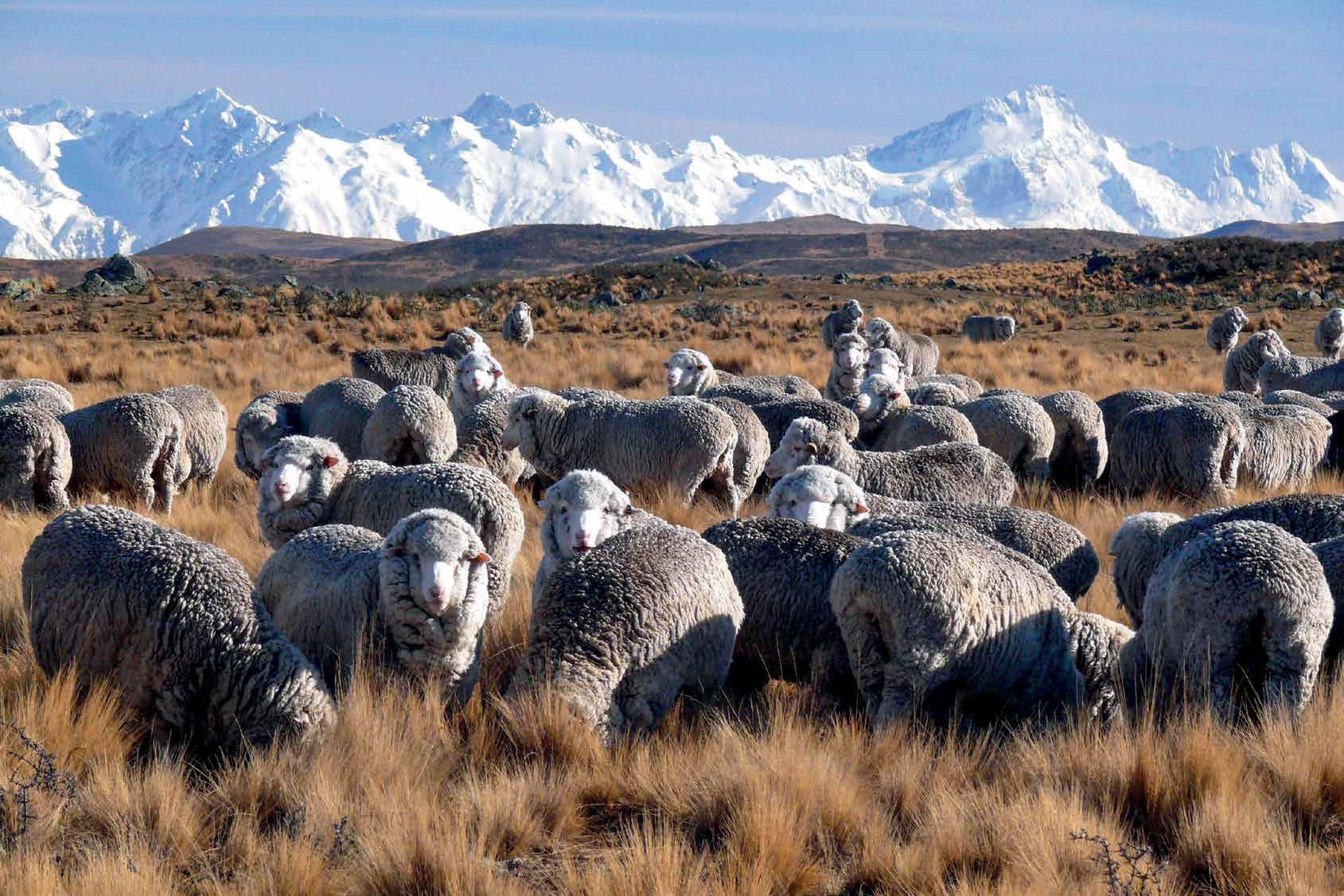



average range. Another win for sheepmeat producers: Saleyard store pricing for lamb has increased with the renewed positive pricing potential for early spring lamb schedules along with procurement pressure from farmers incentivized to hold numbers on farm. Prices paid in both islands took an upward leap by NZc10 to NZc30/kg lwt, although, as winter knuckles in, this demand may slow by
August. Total slaughter numbers for lamb nationally sat at just over 14.7m to 1 June 2024, 8% ahead of last year. In Rabobank’s view, the bulk of the lamb flock is now processed.
Meanwhile, the mutton kill is tracking 6% behind last year thanks to weaker prices. With lamb slaughter numbers slowing at this point in the season, procurement pressure from processors and export demand
are adding some positive upside to schedules.
In May, export volumes to China still led the way for New Zealand lamb at 12,900 tonnes. However, this figure represents a 26% decline compared to May last year. Total export value for lamb to China is down $59m YOY with mutton down $20.6m compared to the same period last year. EU-27 and UK exports continue to perform well for lamb
volumes: up 25% and 38% YOY in May, respectively, with the EU-27 taking close to 7000 tonnes, and the UK at 5300 tonnes. Other big players for lamb exports this May were Canada, Japan, and Saudi Arabia by both volume and value. Demand from these markets outside of China is helpful for farmgate price
resilience.
Demand from the EU-27, the UK, and the US for New Zealand lamb has positive potential for the 2024-25 season.
UREA PRICES ticked higher in June. Recent price action has turned more bullish, and one factor that will likely con-
tinue to provide support is China. The country has placed further restrictions on urea exports. Initially the expectation was for exports to resume in August but it’s now unclear how long the halt will last.
One factor you would expect to add some downward pressure to global pricing is Egyptian plants, which are now back online. The news is a boost to global supply, especially given uncertainty regarding how long the disruptions would last.
Last month we high-
lighted the risk of rising container shipping rates, which could result in higher farmgate prices for farm inputs. So far in June, the WCI shipping index has continued its dramatic rise and is now trading at levels not seen since September 2022. The ongoing Red Sea crisis is continuing to absorb capacity, and the Houthis are intensifying their attacks (as visible in the most recent drone/missile attack in mid-June). Meanwhile, port congestion remains a problem across several regions.



GROWERS AND orchardists will be breathing easy following last week’s Environmental Protection Authority (EPA) ruling that there are no grounds to review the approval for the use of glyphosate.
Glyphosate – most commonly marketed as Round Up – is a herbicide sprayed onto the green foliage of plants, and absorbed within that plant to cause its death in about two weeks. Essentially, it kills the weeds that compete with the chosen crop for nutrients and water.
It is the world’s most used herbicide. In New Zealand, it is used to kill weeds in places ranging from orchards, crops and vineyards, to private gardens, roadsides and public parks.
A survey by Federated Farmers three years ago found that 93% of respondents used glyphosate. Farmers made it clear in the survey that they support continuing status quo use and regulation around glyphosate. They also made it clear that restricting or prohibiting the use of glyphosate would mean that they would be unable to farm to the same quality or quantity as they currently are.
The Environmental Law Initiative (ELI), applied to the EPA in February 2024 to decide whether there are grounds to reassess glyphosate and glyphosate-containing substances, cited significant new information about the negative effects of the substance.
After reviewing information provided by ELI and recent international research on the substance, a decision-making committee of the EPA has decided there are no grounds for a reassessment.
This is good news for our growers and orchardists. EPA’s ruling means they can continue to use herbicides like Round Up without new restrictions.
Farmers need the best tools and technological solutions to grow enough crops, using fewer natural resources to produce sufficient high-quality food, respect the environment, safeguard consumers and support themselves.
GOT SOMETHING on your mind about the latest issues affecting our farming industry? Put your pen to paper or your fingers to your keyboard, and let our readers know what you think. Contact us by either post or email. Don’t forget to put your name and address. Note: Letters may be edited.
post to: Letter to the Editor PO Box 331100 Takapuna , Auckland 0740. or Email: editor@ruralnews.co.nz
HEAD OFFICE POSTAL ADDRESS:
PO Box 331100, Takapuna, Auckland 0740
Phone 09-307 0399
PUBLISHER: Brian Hight Ph 09 307 0399
GENERAL MANAGER: Adam Fricker Ph 021-842 226
EDITOR: Sudesh Kissun Ph 021-963 177 sudeshk@ruralnews.co.nz
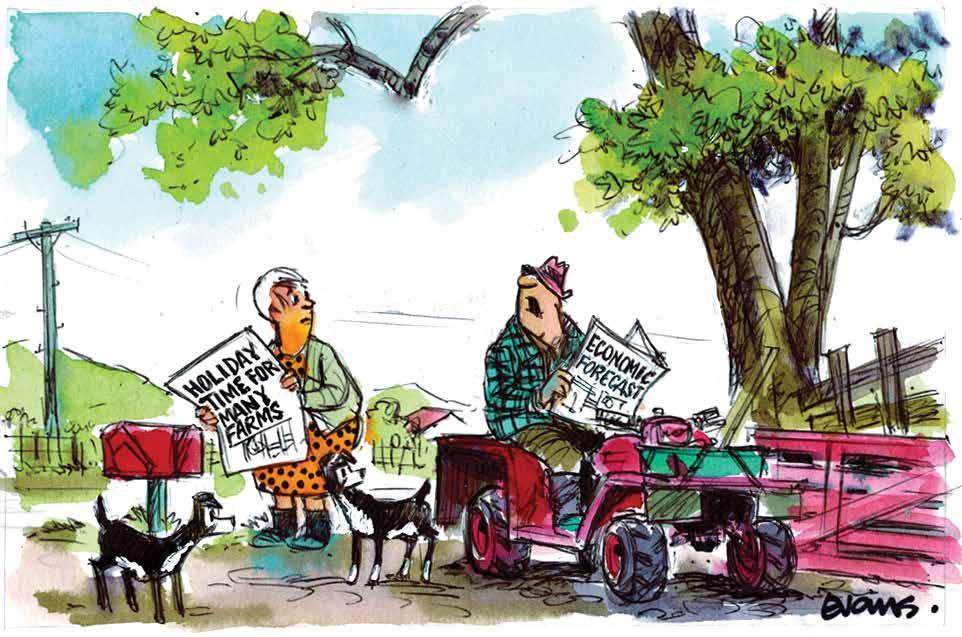
THE MARSDEN Fund used to be reserved for top-tier research funding but now stands accused of burning public funds on PC identity politics crap. The Fund says it “Supports excellence in science, engineering, maths, social sciences and the humanities… by providing grants for research”. The Marsden money is all from the government (i.e. taxpayers). Last year, that funding amounted to $83.5 million – almost exactly what’s needed to fund the 13 cancer drugs that we couldn’t, but apparently now can, afford. The Taxpayer’s Union says the rot set in at the Fund following a 2012 amendment to the funding criteria, to include “humanities”, diverting funds to pet projects of “tofu-munching, climate-striking, purple-haired academics” that don’t bring any return to taxpayers.

FED UP with the appalling decision making over successive governments that has left us with third-world infrastructure? You’re not alone. Ferries, roads, power lines, water pipes – you name it, it’s a basket case. Some have suggested it’s time to take decisions about these vital projects off the barely-competent, shortterm thinkers, otherwise known as politicians, and put them in the hands of actual experts. It would still need oversight on behalf of those paying the bills (taxpayers), but it’s hard to argue against an enduring framework that might end the stop-start cycle that every change in government drives. If we don’t take ideology and politics out of it, we’ll never climb out of the (hell) hole the politicians have left our infrastructure in.
PRODUCTION: David Ferguson Ph 027 272 5372 davef@ruralnews.co.nz
Becky Williams Ph 021 100 4381 beckyw@ruralnews.co.nz
REPORTERS: Peter Burke Ph 021 224 2184 peterb@ruralnews.co.nz
Nigel Malthus Ph 021-164 4258
MACHINERY EDITOR: Mark Daniel Ph 021 906 723 markd@ruralnews.co.nz
ON TOP of the rural banking inquiry, several as-yet-unnamed banks are facing a complaint to the Financial Markets Authority over their role in a government bond sale. A similar case is underway in Australia as its corporate regulator ASIC investigates alleged manipulation of Aussie government debt. Like yours truly, readers probably won’t be able to squeeze out a tear for the banks. One farmer sent the Hound his own rules for dealing with banks: “Rule no.1 – They are not our friends. Rule no.2 – Refer to rule no.1.” As the banks prep for the coming inquiry, they may feel it’s unwarranted. But the evidence, anecdotal and from recent surveys, show that our friends in finance have a real perception problem with farmers that they need to address.
AUCKLAND SALES CONTACT: Stephen Pollard Ph 021 963 166 stephenp@ruralnews.co.nz
WAIKATO & WELLINGTON SALES
CONTACT: Lisa Wise Ph 027 369 9218 lisaw@ruralnews.co.nz
Want to share your opinion or gossip with the Hound? Send your emails to: hound@ruralnews.co.nz
IN 2021 a group of prominent academics got ’cancelled’ for daring to oppose changes to the school curriculum that put all mātauranga Māori (Māori knowledge), which can incorporate spiritual elements, on par with empirical science. KC Gary Judd, a QC/KC for 29 years, got similarly hammered for opposing the introduction of tikanga, or Māori societal lore (not ‘law’), as a compulsory subject for law degrees. Activist PC judges are now steadily pushing these concepts into the legal system with their rulings, such as with the decision to allow activist and amateur arborist Mike Smith to take Fonterra to court, effectively for ‘causing global warming’ with Smith, under tikanga ‘rules’, allowed to take the case ‘on behalf of the land and sea’.
SOUTH ISLAND SALES CONTACT: Kaye Sutherland Ph 021 221 1994 kayes@ruralnews.co.nz
DIGITAL STRATEGIST: Jessica Marshall Ph 021 0232 6446


account.
THE CHALLENGE of climate change means pursuing many avenues to help New Zealand’s farmers meet demands from within our own country and globally.
One of those is the now well-studied practice of breeding sheep for lower methane emissions. It was disappointing therefore to read the commentary of South Otago farmer Hamish Bielski in the Rural News July 2 issue, titled ‘Let’s not chase rainbows’). While I respect the writer’s right to hold his own views and express them, I would refute a number of the claims he has made, on the basis of the evi-
deep concern about the “pressure” to breed for the low methane trait, and the effects on other important traits sought over the last century.
As with any trait, if farmers opt to breed for lower methane there is an effect on other traits that are selected for. While the writer describes it as “sacrificing” other traits, what our published research has found is that breeding for lower methane does not negatively affect key traits such as meat quality.
The evidence, in fact, shows that breeding for low methane may result in animals with higher lean yields increasing revenue through slightly higher dressing-out
Additionally, breeding for low-methane yield is unlikely to negatively affect fertility or parasite resistance in adult ewes.
The writer talks about the danger of selections based on theory or assumptions rather than accuracy at farm level. Yet we now have important insights built over time from our research flocks, as well as what we are seeing from breeders we work closely with.
What we have demonstrated in flocks across New Zealand is that we can select for more efficient animals that digest feed in a way that results in lower emissions and more productivity, without affecting fundamental

by the prospect of having a tool they have control over and the ability to mitigate their greenhouse gas emissions themselves. Over 22,500 sheep have been measured in a programme covering more than 40% of the top breeders in the country.
In fact, at a recent breeders’ forum we pre-
recorded ewe flock breeding its own replacements where methane emissions were decreasing by 0.95% per year. The production index, essentially the gross margin of the enterprise per ewe, was increasing by 185c/year.
This contrasts with the industry trend estimates of a decrease of
tions. They suggest that the sheep industry should be able to reduce methane emissions while also increasing the current rate of genetic gain for production traits. The benefits of this approach relative to the cost of the mitigation are also very favourable.
Our results are being mirrored in the early adopters – breeders who have been selecting for low methane for several years are seeing better results in the animals that have been selected to emit less methane per unit of feed eaten. One example is Leon Black, an early adopter who is seeing about a 20% variation between the dozen sires progeny tested at
sires over the higher measured sires, and on average they are selecting for more efficient, high productivity animals who in tandem have lower methane outputs.
Leon is only one example of many.
The writer talks about the opportunity cost to sheep and beef farmers from efforts spent on reducing emissions through genetics, and how it could be better spent on breeding for health and performance. But it is not a matter of either/or.
Our forward pack of New Zealand breeders is out there showing global consumers that they really can have their steak and eat it. We should be




WITH THE 2024 edition of National Fieldays behind us, it would be fair to say that although the mood was positive – a plus, given the negative sentiment across the rural sector – you must wonder if this showcase format’s days are numbered.
Numbers through the gate tumbled to around 106,000 people, suggesting that money is tight and the fact that entry for a family of four, plus drinks and snacks throughout the day, could easily run to two hundy before you trudge back to the car.
Whilst Fieldays offers plenty of opportunity for the ‘suits’ from the big cities to don their brand new Red Bands to network and speak with real country people, you really

must wonder if the four days are any good for business.
Of course, many of the smaller sites will have done well with the likes of gumboots, waterproof clothing and power tools, so are sure to give it a thumbs up. Moving to sites selling large capital items such as tractors or harvesters, then surely it’s just an oversized, costly circus?
Back a decade or

more, Fieldays may have been the place to grab a special deal and save a few dollars. Given the current state of the economy, with tractor sales down significantly and a report last week telling us that the new car market was back by more than 50% to a record breaking low, it would be safe to assume that a “special
deal” would be available at any tractor dealership or car yard, at any time between 8.30am and 5.00pm, on any day of the week.
Some Fieldays stalwarts will draw your attention to a post-event edition of the Sunday morning Q&A programme where a gushing Auckland journo
interviewed a representative of a farm machinery brand, who claimed to have sold a multimillion-dollar, self-propelled forage harvester “at the event”. Really, if you believe that someone walked onto the site after his coffee and bacon sarnie and bought a $1.5 million-plus machine because it took his fancy,
MASSEY UNIVERSITY and Masterton-based farm finance platform Farm Focus are running a pilot programme where second-year students complete a series of farming financial budgeting and cashflow forecasting assignments, based on real-life data.
The partners produced a comprehensive agricultural programmes curriculum that saw students participate in a range of educational activities that replicated the daily reality of modern agricultural businesses. Over the course of the first semester
2024, students have been accessing, implementing and testing real farming financial data to better understand on-farm finances and the importance and application of budgeting tools.
In partnership with Massey, Farm Focus provided students access to its specialised software, enabling them to take a hands-on approach to learning and implementing financial tools for farm business management. In doing so, students could develop an accurate depiction of on-farm financials whilst becoming familiar with essential plan-
ning and business management tools.
Students partook in workshops, specialised quizzes, and customised data assignments alongside additional avenues of educational support, each curated to deliver a unique and results-driven learning experience.
Annie Cates, agri training advisor, and partnership lead at Farm Focus for the pilot project, says that it has been a rewarding experience being part of the students’ educational journey.
“These students are the next gen-
you will believe Bill Clinton who famously said, “I did not have sex with that woman!”
Of course, that same person might have made a ceremonial handshake on the day, but the truth is, behind the scenes there had been weeks, if not months, of negotiations, trade-in valuations, pricing haggles and finance quotes. The same applies to tractors, where the days of $1000 per horsepower are long gone – with current pricing closer to double that number.
Many site holders will be looking at postevent statistics, focusing on what it cost to be there, and probably realising that the number is a disproportionate amount of their annual marketing budget. Then realising
eration of our farming industry, so it’s incredible to be able to contribute to the success of their studies in a meaningful way; enabling them to learn and experiment with real-life data that we hope will one day serve them well in their future careers.
“Farm Focus is passionate about education and empowering farmers to make informed decisions with their finances. The opportunity to partner with Massey University on this pilot project was a no-brainer,” says Cates.
Professor Peter Tozer, Profes-
that there are another 236 working days in the year when they still need to be flying the company flag.
During the original Covid-19 lockdown in 2020, Fieldays took a rain check, yet the tractor and farm machinery sales rose by more than 30%, so go figure how influential the Fieldays event really is in agri-commerce. The writing is likely on the wall for the true commercial side of the four days. Yup, fast moving goods will continue being carried back to the car, but farmers and contractors are changing the way they look at capital purchases, looking to see machines in the flesh on their own properties or at specialised working events. Watch this space.
sor in Farm Management at Massey University, says the partnership has enabled students to focus more on their practical learnings thanks to the user-friendly nature of Farm Focus’ software.
“In previous years, the students completed their assignments using Microsoft Excel. However, this year, they switched to using Farm Focus’ platform, finding it much easier to navigate. As a result, they have spent more time understanding and learning practical farm management.”


NEW ZEALAND farmers can already subscribe to satellite-based services assessing their pasture levels; now scientists hope they can take satellite imaging to the next step and unlock information about its nutritional value.
Lincoln Agritech has partnered with AgResearch to investigate the possibility, in a sixmonth feasibility study funded by MBIE’s Space Agency.
“It’s already possible to assess the amount of feed available for livestock through satellite imagery, but we don’t know the quality of that feed,” says Lincoln Agritech’s group manager, precision agriculture, Armin Werner.
“Just because it’s
greener doesn’t mean it’s more nutritious or more easily digestible for the livestock – it just means it has more nitrogen.
“The quality of the feed – what proportion can the animal use, how digestible it is, or how much energy can the animal access from the pasture – can vary even within the same paddock.
“Currently the only way to test the nutritional value is by getting it analysed in a laboratory, and not many farmers do that.”
Werner told Rural News that assessing quality was very difficult from satellite data because the nutritional value of pasture depends on the biochemical composition within the plant, which is not externally visible.
However, work over the last 10 years by both

New Zealand and overseas scientists meant there were models now available of the physical and biological processes within the plant that they would marry with sat-
ellite data to hopefully identify signals of the underlying processes.
Werner said they had a concept in mind which they hoped they could show is doable and
“The quality
of the feed – what proportion can the animal use, how digestible it is, or how much energy can the animal access from the pasture – can vary even within the same paddock.”
workable.
“These models are available, they are not new but we need now to adjust them to the quality variables that farmers are interested in. It could be metabolized energy, it could be fibre, it could be digestibility, all this is not assessed with remote sensing.”
Werner said hyperspectral imaging can lead to measuring quality, but it required a lot of calibration effort and was very difficult to scale up to farm level.
That was why they
Down in Woodlands is Horizon Flowers’ famous tulip farm managed by Roy Smak. The Smak family came over from Holland more than 30 years ago to help Horizon grow tulips in Southland’s ideal tulipgrowing climate and soil. When they’re not in tulips, some of the paddocks are leased and planted in sugar and fodder beet by local agricultural contractor and farmer, Erik Smak.
Erik’s contracting business covers a wide area from South Otago right down to the bottom of Southland. He not only grows the beet but runs his own big, self-propelled beet harvester to lift sugar beet and sells them to farmers for winter feed.
We caught up with Erik on the Horizon Flowers farm to talk about his operation and the KWS Conviso® Smart system.
Cleaner crops. No more gaps. The benefits of the Conviso Smart system to Erik are more than sugarbeet bred to be herbicide
tolerant. It’s the high germination rates that have impressed, as Erik explains.
“With KWS, we’ve had both sugarbeet and grazing fodderbeet and both have very high germination rates…it comes up nice and even, I don’t like seeing gaps…plus it’s very palatable to cows.”
As a contractor, you want to get the most out of the land you’re leasing. It’s all about yields and efficiency. Higher germination means every seed planted is going to grow. Flexibility on spray dates and crop stage spraying is also key in Southland as weather can get in the way.
“The spray system that KWS gave me, completely knocked out every weed and the crop is very, very clean and healthy because of that. So, definitely give it a go. It’s an easy, simple system with good proven results. So, if you’re considering it, just go and do it,” vouches Erik.
were trying a different approach using a physical model related to the physiology of the plant.
“This is a different approach to just standard reflectance,” he said.
“We want to have a tool for the farmers. But please accept that we need to go through this journey first and then we can say ‘yes it’s promising’, or not.”
He hoped the current study would justify funding for a larger project that could eventually lead to practical tools for growers and farmers.
The project is one of 12 chosen by MBIE’s Space Agency under a programme called Catalyst: Strategic – New Zealand – NASA Research Partnerships, which aims to identify ways to improve our knowledge of the environment, Earth systems and climate through observation from space. NASA’s contribution is in kind, making its experts available for consultation and advice.
Each six-month project began in April, with funding of up to $75,000 each.
The other 11 funded projects are of less immediate relevance to agriculture but cross a variety of subjects including forest mapping, atmospheric CO2, fire and drought risk, atmospheric river forecasting, and precipitation.


moving south.”
NEW ZEALAND must “throw everything we can” at the problem of facial eczema, says Beef+Lamb NZ’s sector science strategy manager Dr Suzi Keeling.
Speaking at the recent B+LNZ Genetics Sheep Breeder Forum in Christchurch, Keeling outlined a new seven-year research programme that she hoped would result in new tools for farmers to combat FE.
She said FE was a very old problem for New Zealand, with documented cases well over 100 years ago.
“And it’s not getting better. It’s spreading.”
Keeling told Rural News that FE has historically been more in the North Island but cases were now being seen at the top of the South Island as well.
“Also, with our sheep poo epidemiological study there was almost no part of New Zealand where we didn’t find the fungal spoors associated with facial eczema.
“So, it’s been gradually
Keeling says the fungus associated with FE typically likes warm moist environments and with changing climate bringing the conditions that support fungal growth, it was starting to become more of a problem in areas where farmers never had it before.
“So, some of the things that we’ve done in the last 12 months is starting to build specific workshops tailored to farmers in regions where facial eczema has only become a recent issue for them.”
Keeling told the Breeders’ Forum that B+LNZ’s research team had worked hard to develop a programme involving farmers, breeders and other industry partners. It had finally succeeded in securing government co-funding and was now ready to start communicating more about the project.
“So, it’s been a monumental effort to get us this far, and sometimes I almost feel like it’s still not quite real.”
She hoped to have at

least 350 farmers directly involved in gathering data and was already well on the way to that target, with about 200 regularly collecting faeces samples in an epidemiological study conducted over the last facial eczema season.
B+LNZ has earmarked
$9 million over the seven years study, MPI was contributing $8.3 million and there would be another $3.4 million in in-kind contributions.
“We’ve got about 14 industry partners who have all put their hand up to either provide access
to field trials, samples, animals, helping us codevelop tools. So, it’s impressive.”
Keeling said that historically there had been flurries of activity, notably in the 1950s and again in the 1980s, where there was investment in sci-
ence to tackle FE before “it all kind of stopped”.
“What we’ve now got is the opportunity to take advantage of some of the more modern science approaches and see how we can tackle what is essentially a really old problem for New Zealand.”
The first part of the programme would focus on fundamental science, understanding facial eczema and the fungi associated with it.
Keeling said one of the first new insights was that there were multiple species of fungus in pasture, some that produce toxins and some that don’t.
“Using that piece of information, our next step is to see if we can come up with a more targeted tool to inform risk on-farm.”
They also aimed for a better handle on the social, economic and well-being impacts of FE. Economic cost to the sector was estimated at $332 million dollars a year, while the social impacts were “horrific”.
“There’s no other
words to describe the angst at those farmers feel in knowing that they don’t have options, to cure their animals.”
Among the aims was a more animal friendly alternative to the RamGuard test to identify FE-resistant rams and devising alternative grazing management strategies.
There was a lot of anecdotal evidence about rye grass being a challenge.
“But how do we go further than that and produce some good guidelines and give farmers some options?
“It’s always thinking about what research looks like from a farm systems perspective,” said Keeling.
“It’s the genetics, it’s the feed, it’s the animal health, but it’s also making sure that we’re supporting the farmers on the journey as well and making sure that we’re having really good conversations and listening to all the expertise that’s out there, because we certainly don’t know everything.”
FARMERS Eddie and Kath Lambert have made history by being the recipients of both the 2024 Valden Cow of the Year and the 2024 Mahoe Trophy at the 2024 Holstein Friesian NZ Awards, held in Hamilton last month.
The Lamberts, who dispersed their herd in 2021, are the first Holstein Friesian breeders to not only win both coveted awards, but in the same year.
“We are very honoured and humbled to win both trophies, especially in the same year,” Eddie says. “We have always admired the cow families that have won these trophies in previous years, and it is something we had never imagined we would do.”
The 2024 Valden Cow of the Year was awarded to Royson Oman Cybil EX2 11* ET. The award is given to the cow deemed to have contributed the most to the Holstein Friesian breed on a continual basis.
Cybil (BW 145, PW 588) is a “neat, no-nonsense cow” who stayed with the Lamberts after they dispersed

– through LIC. Currency – who passed away in June due to injury - won the Mahoe Trophy with 517 points.
The Mahoe Trophy is awarded to the New Zealand-bred bull with the highest aggregate points for breeding worth (BW), protein BV, fat BV, fertility BV, functional survival BV and type traits.
A2A2 Currency has a BW 439, with fat 4.2% and protein 3.8%. He contributed of over 140,000 inseminations across the industry to date.
LIC livestock selection manager Simon Worth says that it came as no surprise that Currency had proven to be a fabulous bull.
“Take a look into the cow family he comes from - it is truly superb,” he says.
Eddie and Kath Lambert say they feel incredibly honoured to be awarded the two titles.
“To be recognised as being a top Holstein Friesian breeder is truly a dream come true.”
WITH 2023 behind us, the global market for agricultural tractors closed with a decline in terms of units, but with growth in terms of value.
The total number of tractors sold reached around 2.2 million units, marking an 8% decline compared to 2022, while revenue rose to $57 billion, representing a 2% increase.

Looking at the broader picture, complementing that $57 billion related to tractors, other types of farm machinery notched up $73 billion (+2%) and farm machinery components delivered sales of $34 billion (+5%), for a total industry revenue of $164 billion, up 3% compared to 2022. The increases were driven by
higher price lists, in turn, driven mainly by inflation and the increased cost of raw materials.
Globally, individual markets showed varying results, primarily due to the performance of har-
vests and agricultural incomes. India confirmed a total of 915,000 tractors sold, a result like the record volumes reached in 2022, while China stalled at around 380,000 units, a significant 28%
FOLLOWING THE spat in April, where AGCO surprised the tractor world by breaking off its ties with Indian tractor manufacturer and major shareholder TAFE, the fallout has seen Deutz AG announcing that it is entering a partnership with the Indian company.
The cooperation with the Indian agricultural group TAFE
announced on July 1st allows DEUTZ to expand its business in India, tapping into one of the fastest growing markets worldwide. TAFE Motors is a subsidiary of TAFE, the third largest tractor manufacturer in the world. In 2023, the Indian economy grew by 6 to 7 %, while it’s expected that India’s GDP) will quadruple by 2050, with the agri-
cultural and construction sector set to play a major role in achieving this growth.
As a starting point, Deutz AG says TAFE Motors will manufacture up to 30,000 DEUTZ engines under license in the 50 to75 hp and 75 to 100 hp sectors with 2.2 and 2.9 litre capacities, augmenting the wide range of engines already made by the
decline compared to the previous year.
The United States recorded a total of 250,000 tractor sales, an 8% decline, attributed to the contraction of agricultural incomes, partly due to reduced exports of commodities to the Chinese market and increased competition from other producing countries in international markets.
Europe achieved sales of 158,000 tractors, a 5% decrease said to be a consequence of insufficient agricultural profitability and partly due to unfavourable weather
Group across numerous emission standards.
Manufactured in the TAFE Motors facility at Alwar, Rajasthan, India, the new engines will suit the growing demands of the Indian market, as well as Deutz’s aspiration to market its engines in the APAC region, benefitting from advantages in production and logistics.



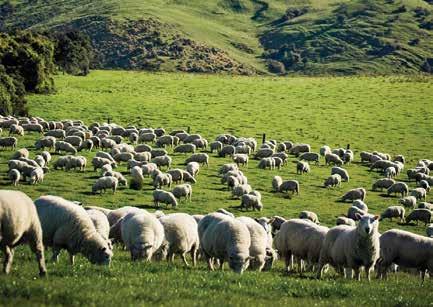
conditions that negatively impacted some crops. Within the market, France saw a 2% increase to 36,400 tractors registered, Germany remained stable with 28,900 units, while in contrast, Italy dropped by 13% to 17,600 units, and Spain an even steeper decline of 18%, finishing at 7700 units.
Beyond the four major markets, Turkey grew by 16% to nearly 78,000 tractors, Canada was back by 10% at 28,000 tractors and Russia recorded 36,000 units sold, in line with the registrations of the previous year. Sales in Japan remain unchanged at 34,000 units.
Industry forecasts for the near future still predict high global demand, although the market is likely to be increasingly exposed to climatic and geopolitical variables. Globally, declines in cereal production in Ukraine and Russia have tended to be offset by increases in Brazil, Australia and India. Industry sources suggest that this might result in a new “geography” for the machinery and technology industries, with a decline in tractor sales, but with an increase in horsepower and revenues.
@rural_news
facebook.com/ruralnews
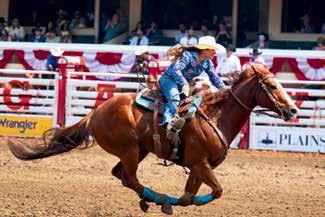

Calgary Stampede & The Rocky Mountains
Jul 5th, 2025, 16 Days
Embark on a 16-day adventure through the heart of Canada's stunning landscapes and vibrant culture. Experience the thrill of the Calgary Stampede - world-class rodeo action and the Chuckwagon event.
Indulge in luxury aboard the Rocky Mountaineer Train from Banff to Vancouver, passing through the majestic Continental Divide. Discover the natural


DANIEL
CONTRACTORS PHIL
and Tim May, who work around the Methven area of Mid- Canterbury in the South Island, have been putting together a fleet of machines with the right technology to achieve productivity gains and maintain their reputation for an efficient, reliable service.
Since starting May
Brothers Contracting as teenagers 17 years ago, the brothers have grown their business from a second-hand 1986 Hess-





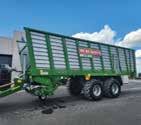

ton windrower to a fleet of more than 30 John Deere tractors, combines, forage harvesters and windrowers. In addition to servicing Canterbury’s small grains, forage

and grass seed industries, the brothers also grow potatoes for a large global company.


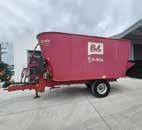





Phil says their ability to streamline their operation, closely monitor expenses and offer a costeffective service has been influenced by having John Deere machines equipped with JDLinkTM and John Deere Operations CenterTM.
He comments that as far as technology is concerned, everything is more efficient – and right there on your phone.
“We’ve always got to be managing our costs when we’re running machinery, and Ops Center shows us how efficient the machines are, delivering information on our working times, idle times, how much fuel is getting burnt and even how much time we’re spending on the roads,” says Phil.
“Having these capabilities means we can factor all of that into what we’re charging and offer a costeffective service.”
Looking at areas such as yield maps that are provided quickly via Ops Center, Phil notes that the technology was a far cry from the “old days” when a USB was needed to transfer information from a machine to a computer to create such maps.
“For example, you’ve got all the benefits of sending information from the forage harvester straight back to the office. I wouldn’t look back;
today’s systems are a lot more user-friendly and all remote – it’s quite brilliant,” says Phil.
As they were growing up, Phil and Tim got to know Peter Etheridge, whose John Deere dealership, Drummond & Etheridge, has been operating in Ashburton for 50 years.
“While you do business with the dealership, it’s the people who make the business. Knowing Pete has been a big part of our John Deere background and growth,” Phil says.
Looking at the latest connectivity, “The ability for the machines to send error codes to the dealership often means that when we phone to tell them we’ve had a breakdown,” says Phil.
“Drummond & Etheridge are almost one step ahead of us.”
While it was hard to put a dollar value on connectivity for the business, it saves time by collating data and providing detailed information on their fleet and crop performance.
The May Brothers’ latest investment in green and gold is a JD X9 1100 combine harvester that’s been put to the test in a variety of crops including ryegrass, rapeseed, kale seed, wheat and barley.
“We’ve only done the one harvest with the X9 so far, but the performance in cereal crops is probably twice the capacity of anything we’ve ever owned,” says Phil.








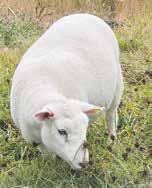



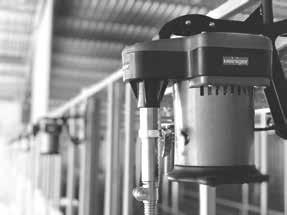



















The Hansen Full Flow Ball Valve’s reputation for holding up in frosty weather is quite simply unsurpassed! The extraordinarily high quality design coupled with a host of practical features makes it the ultimate user experience. What’s more it’s the only NZ made Ball Valve with a 100% replacement warranty.
